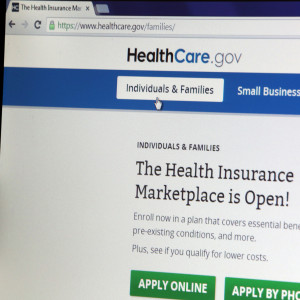Just three months ago, the Affordable Care Act (ACA or “Obamacare”) once again took center stage at the Supreme Court in King v. Burwell, thanks to a dispute over whether the law’s premium subsidies can be offered on federal exchanges (i.e., healthcare.gov). Within the next month, SCOTUS will likely rule on the case, with the decision expected to affect more than 7.5 million Americans.
The petitioners in King have a simple, powerful argument. Section 1311 of the ACA provides subsidies for qualified Americans who buy health insurance on state exchanges. In states that do not set up state exchanges, the federal government is required to do so in their stead. The petitioners’ argument is that the letter of the law only allows subsidies to flow through state exchanges.
In a 2012 ruling by the Internal Revenue Service, however, an exchange was redefined to be any “State Exchange, regional Exchange, subsidiary Exchange, and Federally–facilitated Exchange.” One of the administration’s main lines of defense is, indeed, that the federal government “steps into the shoes” of states to install an exchange where the state does not.
In oral arguments in March, both sides faced hard questions. Justice Anthony Kennedy expressed concern that halting subsidies to the 34 states on federal exchanges (and possibly the seven states where the federal government operates the exchanges but the states perform some functions) would pose serious problems. Justice Kennedy also appeared to question whether “Chevron deference” (which defers to regulatory agencies in the case of statutory ambiguity) would be appropriate in this instance.
Nonetheless, the aforementioned points are mostly academic. The judicial history of the ACA should teach us one thing: predicting SCOTUS opinions can be next to impossible. What would happen should the Supreme Court—in a worst-case scenario for the law—decide that the IRS exceeded its authority?
Should King prevail and the employer mandate become void, more than 11 million Americans would be freed from having to buy Obamacare insurance. This finding comes from the American Action Forum, whose research also suggests that over 1.2 million non-employed people would seek employment and an additional 237,000 jobs would be created. Others are less sanguine: the Urban Institute estimates an 8.2 million increase in uninsured among the 34 states, with a 35 percent rise in premiums.
While numerous analysts see a catastrophic scenario arising from the effective elimination of the individual mandate in many states, the ultimate effect on insurance markets is less clear. A National Bureau of Economic Research (NBER) working paper examined the effects on insurance coverage of community-rating and guaranteed-issue regulations. The analysis found a strong positive relationship between higher-risk individuals and the likelihood of their finding insurance coverage. Regulations primarily serve to change the mix of the insured, according to the authors, resulting in fewer healthy insured individuals.
While the NBER paper does not find evidence of significant adverse selection of the sort that could wreck insurance markets, a SCOTUS verdict in favor of petitioners would likely have varying effects in different states. New York’s experience with community rating and guaranteed issue without an individual mandate, for instance, resulted in a massive decline in non-group enrollment, with premiums skyrocketing.
Whatever the ultimate effects of a ruling in favor of the petitioners, it would be poor politics and even poorer policy to leave 34 states with an odd combination of the pre-ACA status quo coupled with most post-ACA regulations. Fortunately, the ACA itself presents an opportunity for Republicans to engineer some creative solutions.
Under the ACA’s section 1332, “State Innovation Waivers” allow states to waive certain aspects of the law’s statutes, including employer and individual mandates, as well as plan designs and subsidy structures. In turn, states can receive block-grant funding to provide coverage so long as they provide equal-cost protections, maintain similar levels of coverage, and do not increase the federal deficit. These innovation waivers hold enormous promise—and, with a bit of tweaking, could allow serious reform via “federalism on steroids.”
King v. Burwell also speaks loudly to the broader issues of health reform and incentive structures, particularly as a growing share of Americans begin receiving public, or heavily-subsidized insurance coverage. The Supreme Court’s first major ruling on Obamacare resulted in the overturning of the provision requiring states to expand Medicaid. Should a ruling later this month rescind the subsidies many states receive, Obamacare may end up on life support, too. Whether this would trigger the dire outcome some fear is far less certain—given the federal safety net, projected economic benefits from increased labor market growth absent subsidies, and, ideally, several smart reforms.

